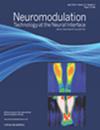实验性脑深部电刺激对啮齿动物癫痫模型的系统评价。
IF 3.2
3区 医学
Q2 CLINICAL NEUROLOGY
引用次数: 0
摘要
目的:脑深部电刺激(DBS)是治疗耐药癫痫的一种成熟的神经调节技术。尽管DBS在精心挑选的患者中广泛使用,但其抗癫痫作用的机制仍不清楚。在此,我们提供了一个详细的概述有关实验性DBS在啮齿动物癫痫模型的当前文献,并确定在该领域的相关趋势。材料和方法:根据PRISMA指南,使用PubMed MEDLINE数据库进行系统评价。数据提取侧重于研究特征,包括刺激方案、癫痫发作和行为结果,以及报道的作用机制。结果:1788篇文献中,纳入164篇。近几十年来,发表的文章数量呈指数级增长。大多数研究使用化学或电诱导的癫痫模型。针对丘脑前核、海马区或杏仁核的DBS研究最为广泛。确定了有效的增产参数,并探索了新的增产设计,如闭环和非结构化增产方法。常见的机制包括通过抑制兴奋性神经传递和抑制GABA的释放来调节突触。在网络水平上,抗癫痫效应与神经网络的去同步性有关,其特征是低频振荡减少。结论:啮齿类动物模型显著促进了对疾病病理生理学的认识和新疗法的发展。然而,关于DBS机制、最佳靶点和参数的基本问题仍然存在。需要进一步的研究来改进DBS疗法,并根据患者的具体情况定制治疗方案。本文章由计算机程序翻译,如有差异,请以英文原文为准。
Systematic Review of Experimental Deep Brain Stimulation in Rodent Models of Epilepsy
Objectives
Deep brain stimulation (DBS) is an established neuromodulatory technique for treating drug-resistant epilepsy. Despite its widespread use in carefully selected patients, the mechanisms underlying the antiseizure effects of DBS remain unclear. Herein, we provide a detailed overview of the current literature pertaining to experimental DBS in rodent models of epilepsy and identify relevant trends in this field.
Materials and Methods
A systematic review was conducted using the PubMed MEDLINE database, following PRISMA guidelines. Data extraction focused on study characteristics, including stimulation protocol, seizure and behavioral outcomes, and reported mechanisms of action.
Results
Of the 1788 resultant articles, 164 were included. The number of published articles has grown exponentially in recent decades. Most studies used chemically or electrically induced models of epilepsy. DBS targeting the anterior nucleus of the thalamus, hippocampal formation, or amygdala was most extensively studied. Effective stimulation parameters were identified, and novel stimulation designs were explored, such as closed-loop and unstructured stimulation approaches. Common mechanisms included synaptic modulation through the depression of excitatory neurotransmission and inhibitory release of GABA. At the network level, antiseizure effects were associated with the desynchronization of neural networks, characterized by decreased low-frequency oscillations.
Conclusions
Rodent models have significantly advanced the understanding of disease pathophysiology and the development of novel therapies. However, fundamental questions remain regarding DBS mechanisms, optimal targets, and parameters. Further research is necessary to improve DBS therapy and tailor treatment to individual patient circumstances.
求助全文
通过发布文献求助,成功后即可免费获取论文全文。
去求助
来源期刊

Neuromodulation
医学-临床神经学
CiteScore
6.40
自引率
3.60%
发文量
978
审稿时长
54 days
期刊介绍:
Neuromodulation: Technology at the Neural Interface is the preeminent journal in the area of neuromodulation, providing our readership with the state of the art clinical, translational, and basic science research in the field. For clinicians, engineers, scientists and members of the biotechnology industry alike, Neuromodulation provides timely and rigorously peer-reviewed articles on the technology, science, and clinical application of devices that interface with the nervous system to treat disease and improve function.
 求助内容:
求助内容: 应助结果提醒方式:
应助结果提醒方式:


